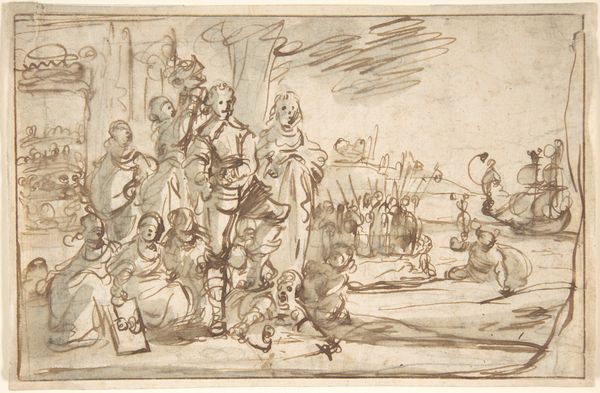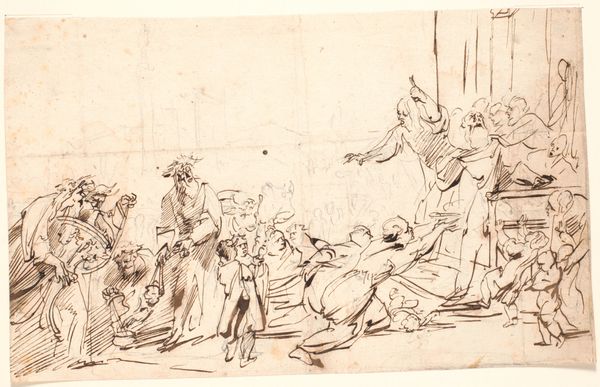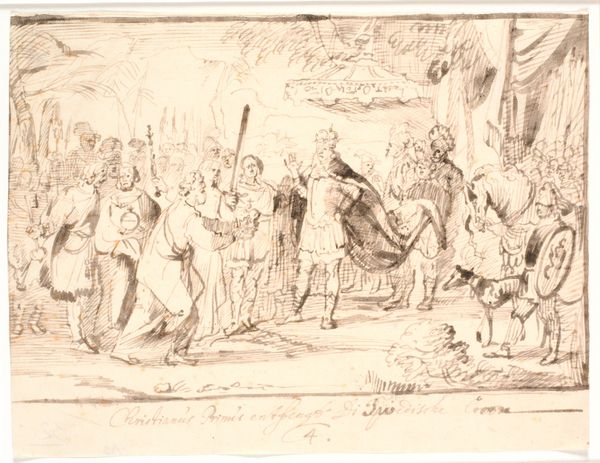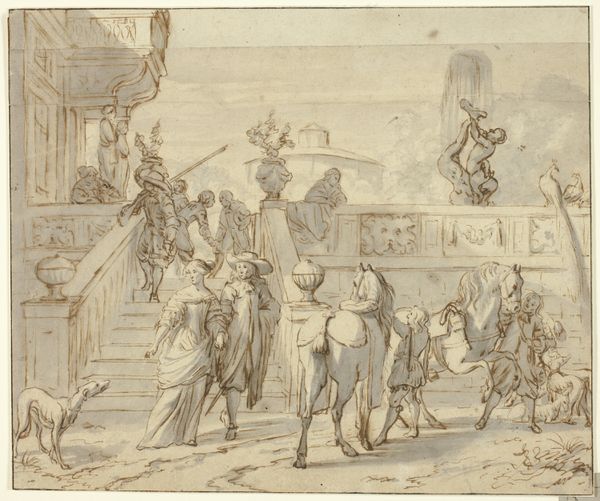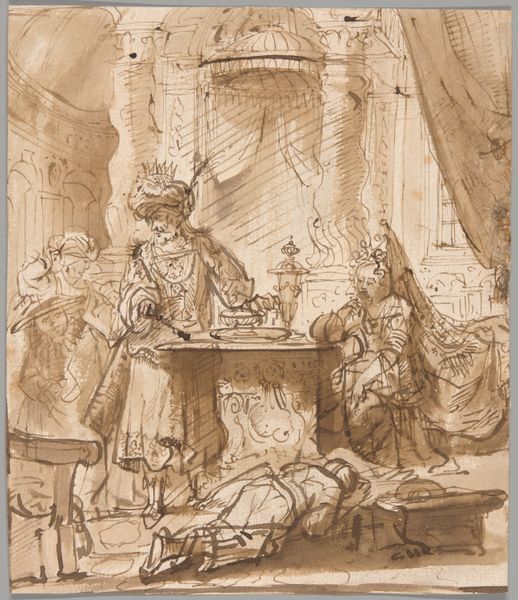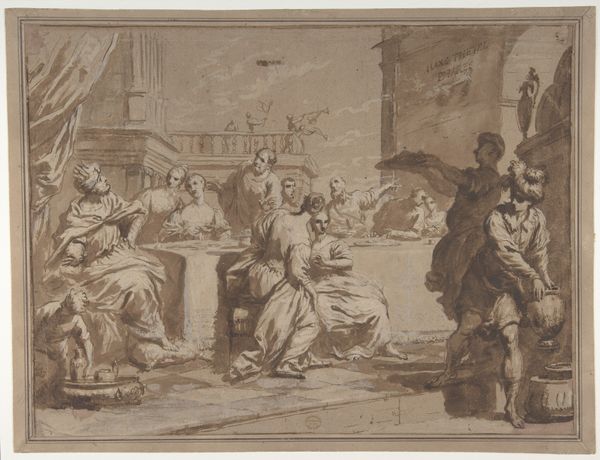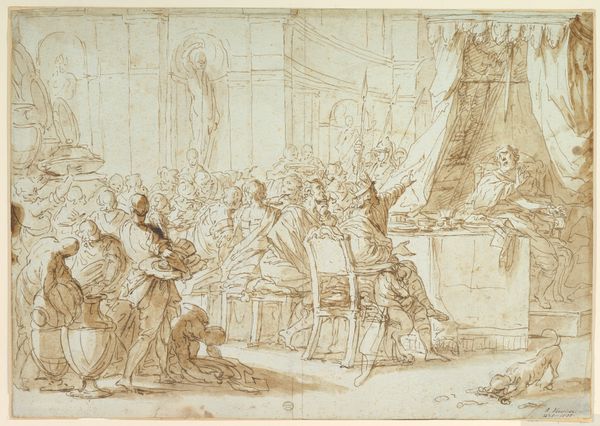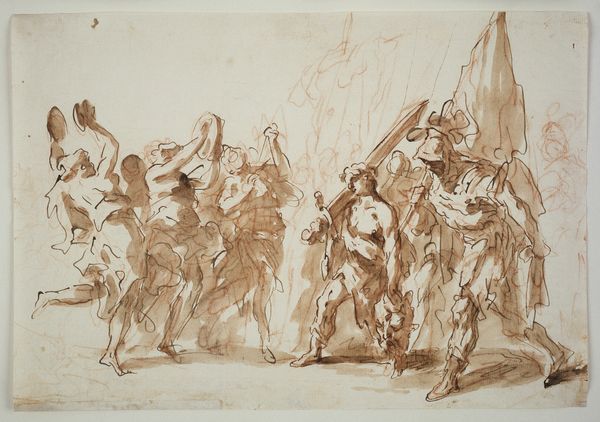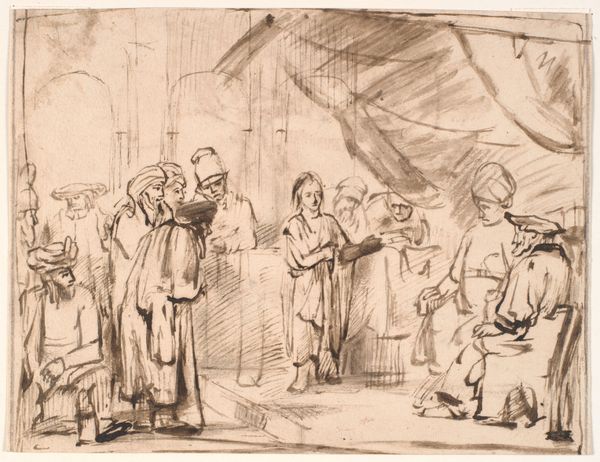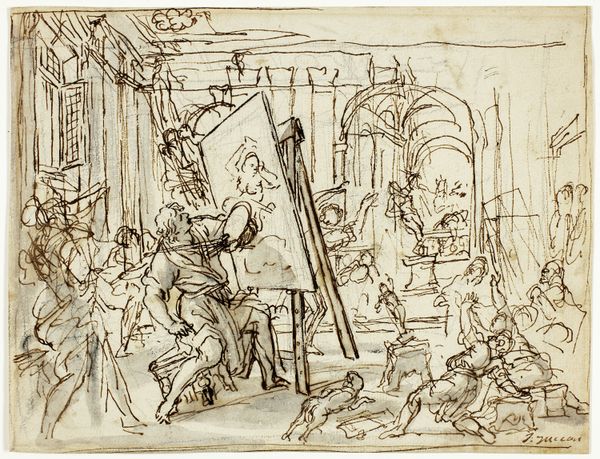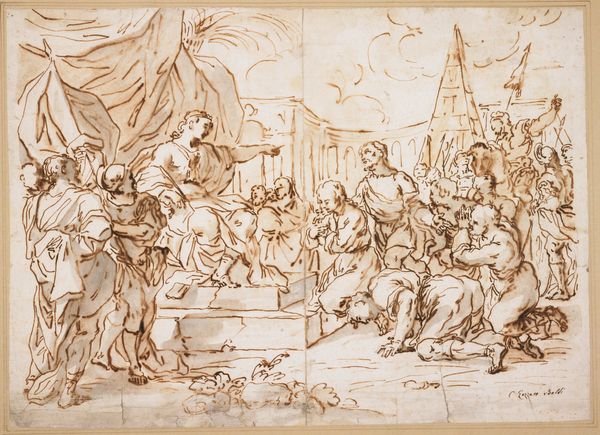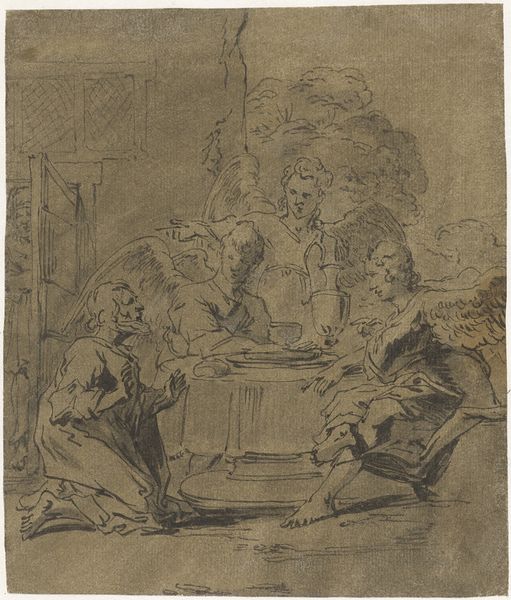
Fem herrer på en terrasse; en tjener bærer en agave frem 1623 - 1678
0:00
0:00
drawing, ink
#
portrait
#
drawing
#
ink drawing
#
baroque
#
figuration
#
ink
#
genre-painting
Dimensions: 277 mm (height) x 346 mm (width) (bladmaal)
Curator: Here we have Jürgen Ovens’ "Five Gentlemen on a Terrace; A Servant Bringing Forward an Agave" created sometime between 1623 and 1678, an ink drawing housed here at the SMK. What's your initial take on it? Editor: Oh, it’s giving me lazy afternoon vibes. The looseness of the ink, that brownish wash… it feels so relaxed, almost a captured moment rather than a formal portrait. A lovely casualness in the way the figures are just…there. Curator: It's fascinating how Ovens uses ink to delineate social hierarchies here. Look closely at the rendering of the figures: the gentlemen are rendered with meticulous detail in their attire, a visual marker of status emphasized by the servant's more sketch-like, less defined form, suggesting labor. Editor: Yes, I see what you mean. And it’s the composition too—the men arranged almost theatrically, with that agave presented like a rare treasure. The plant becomes this opulent stage prop in their tableau of leisure. Do you think he knew that would play into interpretations about colonization? Curator: It would have been unavoidable given the context of imported goods at that time. Also note how the architectural elements – the columns and hinted-at balustrade – function almost as a frame, underscoring the performance of wealth. Ovens highlights the materiality of privilege. Editor: The shadows are really working here, almost like these grand, powerful shapes being cut out and laid over the rest of the picture, while these really gentle ink-strokes outline a bunch of what-nots, a ladder or fencing perhaps, sitting casually to the side. It gives off such a beautiful and subtly unfinished tone overall! Curator: That’s a keen observation about the technique. Ovens certainly demonstrates command of ink washes to establish form, but what’s most captivating to me is how the work exemplifies early Baroque artistic practices blending precise technical application alongside subtle commentaries on the structures propping up gentry life. Editor: It makes me think of capturing life's beautiful fragments— those snippets of fleeting pleasure against a background of structured expectations. It really inspires. Thanks for lending your expertise to look at this work with me today. Curator: Thank you. It's been enriching to peel back the layers, together finding nuances within this detailed yet understated piece and further illustrating that within seemingly relaxed moments exist encoded complexities of society and power during the Baroque era.
Comments
No comments
Be the first to comment and join the conversation on the ultimate creative platform.
